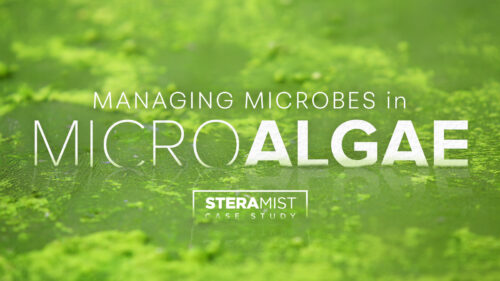ORs Saving Time and Labor
Decrease Labor Time and Increase Effectiveness in Operating Rooms
Disinfecting an operating rooms (ORs) are a challenge due to the presence of harmful microorganisms and the difficulty of reaching all the surfaces in the room. In recent years, several new technologies have emerged that aim to make the process easier and more effective, the most innovative being SteraMist disinfection technology. One of the biggest challenges for operating rooms is the presence of bacteria, viruses, and other microorganisms that are harmful to people. These microorganisms, such as Clostridium difficile (C. diff), Candida auris (C. auris), and Staphylococcus (MRSA) along with many others are difficult to kill because they survive on surfaces for long periods of time and are resistant to many disinfectants. Another factor that impacts the difficulty of disinfecting operating rooms is the complexity of the room itself. ORs are filled with a variety of surfaces, including floors, walls, cabinets, electronics, surgical equipment, and tools, which are difficult to reach and clean effectively.
Steps for General Cleaning in ORs
Taking everything into consideration when disinfecting ORs, there is a long checklist to go through to make sure that every inch of the room is disinfected and ready for another patient to enter. The typical checklist for a terminal clean look something like this:
- Assess the room
- Remove all soiled or used personal care items
- Collect linens from the patient’s bed
- Inspect windows and glass surfaces
- Dispose of trash and change sharps container
- Remove all debris/solid waste via vacuum or surface sweep
- Apply a disinfectant to trash cans
- Clean and disinfect low-touch surfaces with disinfecting wipes or spray and wipes
- Clean and disinfect high-touch surfaces & the restroom (if applicable) with disinfecting wipes and/or spray
- Vacuum, dust, and mop the floor
- Damp mop floor
- Visually inspect and check there is no soil load left behind
This is a long list and usually takes over an hour to complete. The problem with disinfection protocols used by EVS all over the country and the world is they consume time and involve intensive labor. Wiping down high and low-touch areas with disinfecting wipes that only achieves up to a four-log reduction in microbes is tedious work and leaves room for human error. Not only is it tedious and time-consuming but manual cleaning poses damage to surfaces over time with the residue they leave behind. If there are no disinfection wipes present, then most likely spray disinfectants and microfiber wipes will be used. This adds another step in an already long process and introduces more chemicals that damage equipment due to long wet contact times.
Steps for Disinfecting with SteraMist in ORs
To address these challenges, hospitals and other healthcare facilities have turned to new technologies such as SteraMist. SteraMist disinfection uses patented ionized Hydrogen Peroxide (iHP) to reach all surfaces in a room, including those that are difficult to access. The technology converts hydrogen peroxide into hydroxyl radicals, which is the most effective way to kill microbes instantly on contact. SteraMist also eliminates the need to wipe which significantly cuts down on manual labor and labor time. To get an idea of how SteraMist can save you time, this is an example of a checklist of terminal cleaning disinfection when SteraMist is implemented into the protocol.
- Assess the room
- Remove all soiled or used personal care items
- Collect linens from the patient’s bed
- Inspect windows and glass surfaces
- Dispose of trash and change sharps container
- Remove all debris/solid waste
- Vacuum/Dust/Mop floor
- Spray all surfaces with SteraMist disinfection: high touch, low touch, floors, walls, door handles, and even electronics, and sensitive equipment
- Visually Inspect and check there is no soil load left behind
SteraMist consolidates the hardest steps in the process, cutting down on labor time and increasing effectiveness with a six-log reduction of any microbe in the room without wiping, leaving residues, or damaging equipment. It also greatly reduces the amount of chemicals and equipment needed to complete a terminal clean. Only SteraMist technology can boast these attributes while also providing the highest level of disinfection against C. diff, C. auris, MRSA, and so much more.
Keep it Simple with SteraMist Disinfection
Operating rooms (ORs) remain one of the most challenging areas to disinfect, but innovative technologies like SteraMist have made it possible to do so quickly and efficiently. With SteraMist, cleaning personnel can disinfect a vast area quickly, saving time, and reducing the risk of cross-contamination. Disinfection of operating rooms is essential to prevent the spread of infections but poses a large challenge with traditional methods. With SteraMist, it’s possible to achieve complete disinfection and protect patients and medical staff from harmful pathogens while cutting down labor time while not increasing the quality of disinfection. Find out how you can easily implement SteraMist into your healthcare setting here!



